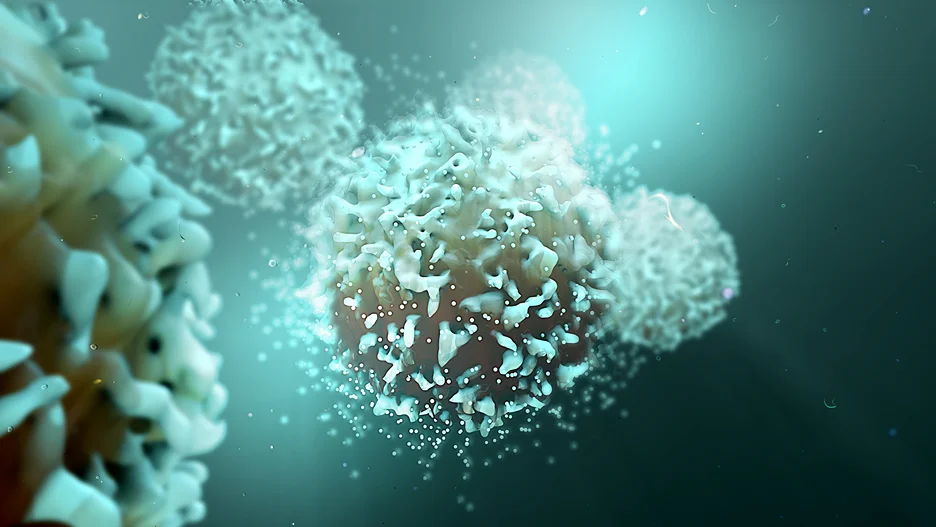Unraveling the Complexities of Your Body’s First Line of Defense
The immune system plays a crucial role in maintaining our overall health by defending our body against various pathogens such as bacteria, viruses, and other harmful agents.
It is composed of two interrelated components: innate immunity and adaptive immunity.
This article will focus on the innate immune system, discussing its key components and addressing some common misconceptions surrounding it to help you better understand your body’s first line of defense against infections.
Key Components of the Innate Immune System
The innate immune system serves as our body’s first line of defense against pathogens, safeguarding our health by responding rapidly to harmful invaders. In this section, we delve into the essential components that make up the innate immune system, shedding light on how these elements work together to protect and maintain our well-being.
Physical barriers
Skin: Our skin acts as the first line of defense against pathogens, creating a physical barrier that prevents them from entering our body. The outer layer of the skin, known as the epidermis, consists of tightly packed cells that form a strong and resilient barrier.
Mucous membranes: Mucous membranes line various body cavities such as the mouth, nose, and gastrointestinal tract. They secrete mucus, a viscous fluid that traps pathogens and contains antimicrobial substances that help neutralize them.
Cellular defenses
Phagocytes (macrophages and neutrophils): These white blood cells are responsible for engulfing and destroying pathogens through a process called phagocytosis. Macrophages are found in tissues throughout the body, while neutrophils are the most abundant type of white blood cells in the bloodstream.
Natural killer (NK) cells: NK cells are a type of lymphocyte that can recognize and kill virally infected cells and cancer cells without the need for prior activation.
Dendritic cells: Dendritic cells function as the bridge between the innate and adaptive immune systems by capturing and presenting antigens to T cells, initiating the adaptive immune response.
Mast cells: Mast cells play a role in the inflammatory response and release histamine and other mediators that help recruit immune cells to the site of infection.
Chemical defenses
Lysozyme: Lysozyme is an enzyme found in various bodily fluids such as saliva, tears, and mucus. It can break down the cell walls of certain bacteria, leading to their destruction.
Complement proteins: These proteins are part of the immune system’s chemical arsenal and can directly kill pathogens or enhance the effectiveness of phagocytes.
Interferons: Interferons are signaling molecules produced by cells in response to viral infections. They help inhibit viral replication and activate immune cells to clear the infection.
Common Misconceptions about the Innate Immune System
In this section, we address common misunderstandings surrounding the components and functions of the innate immune system, dispelling myths to provide a clear and accurate comprehension of our body’s natural defenses.
Stomach acid as an innate immune component
Role of stomach acid in digestion: Stomach acid, also known as gastric acid, primarily functions to break down food and activate digestive enzymes. It also has some antimicrobial properties due to its low pH.
Stomach acid’s limited contribution to immunity: While stomach acid can kill some pathogens, it is not considered a major component of the innate immune system. Other factors such as mucus, lysozyme, and the immune cells mentioned earlier play a more significant role in defending our body against infections.
Red blood cells and the innate immune system
Function of red blood cells: Red blood cells, or erythrocytes, are responsible for transporting oxygen from the lungs to the rest of the body and removing carbon dioxide.
Why red blood cells are not part of innate immunity: Red blood cells do not have any direct involvement in immune defense mechanisms. They lack the necessary receptors and functions to participate in the immune response.
Lymphocytes and innate immunity
T cells and B cells as part of adaptive immunity: T cells and B cells are lymphocytes that play a key role in the adaptive immune response. They are responsible for recognizing and eliminating specific pathogens based on their unique antigens.
NK cells as the exception: As mentioned earlier, NK cells are a type of lymphocyte involved in the innate immune response. They can directly target and kill infected cells without prior exposure to the pathogen.
Innate Immune System vs. Adaptive Immune System

The human immune system is a complex and intricate network, consisting of two primary subsystems: the innate immune system and the adaptive immune system. In this section, we explore the distinctions between these two subsystems, examining their unique characteristics and roles in defending our body against foreign invaders while cooperating harmoniously to maintain overall health.
Comparing key features
Response time: The innate immune system provides an immediate response to infections, while the adaptive immune system takes longer to develop a specific response.
Specificity: Innate immunity has a broad, nonspecific response to pathogens, whereas adaptive immunity is highly specific and tailored to each unique pathogen.
Memory: The innate immune system does not possess memory, meaning it cannot “remember” previous encounters with pathogens. In contrast, the adaptive immune system can “remember” pathogens it has encountered before, enabling a faster and more robust response in the event of subsequent infections.
Interplay between innate and adaptive immunity
Role of dendritic cells and antigen presentation: Dendritic cells capture and process antigens from pathogens, presenting them to T cells to initiate the adaptive immune response.
Activation of T cells and B cells: The interaction between dendritic cells and T cells leads to the activation and differentiation of T cells and B cells, which then work together to eliminate the pathogen.
Importance of cooperation for effective immune response: The innate and adaptive immune systems work together to mount a coordinated and effective response against pathogens, ensuring the body’s defense mechanisms are both rapid and precise.
Unlocking the Secrets of Optimal Immune Health: Partnering with SeeBeyond Medical for Expert Guidance and Support
Understanding the intricacies of the innate immune system is essential for maintaining optimal health. As the first line of defense against infections, it plays a critical role in keeping us safe from harmful pathogens. By partnering with SeeBeyond Medical, you can access expert guidance and support to help you take charge of your immune health and overall well-being.
